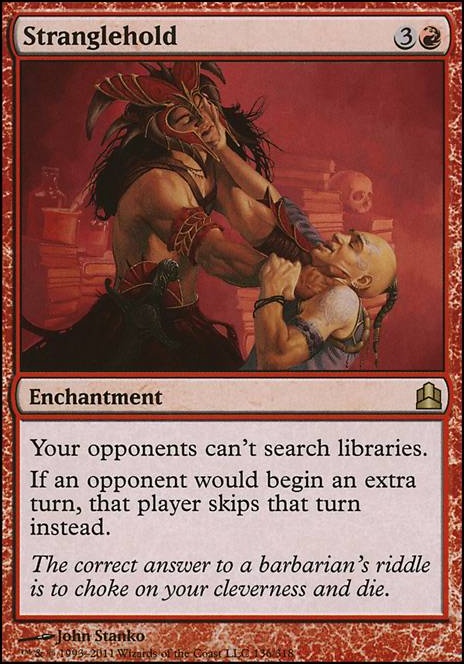Land (33)
-
1x
Ancient Tomb

-
1x
Arid Mesa

-
1x
Badlands

-
1x
Bayou

-
1x
Bloodstained Mire

-
1x
Brushland

-
1x
Caves of Koilos

-
1x
City of Brass

-
1x
City of Traitors

-
1x
Command Tower

-
1x
Flooded Strand

-
1x
Gemstone Caverns

-
1x
Gemstone Mine

-
1x
Godless Shrine

-
1x
Horizon Canopy

-
1x
Llanowar Wastes

-
1x
Mana Confluence

-
1x
Marsh Flats

-
1x
Mishra's Workshop

-
1x
Misty Rainforest

-
1x
Overgrown Tomb

-
1x
Plains

-
1x
Plateau

-
1x
Polluted Delta

-
1x
Savannah

-
1x
Scrubland

-
1x
Swamp

-
1x
Taiga

-
1x
Tarnished Citadel

-
1x
Temple Garden

-
1x
Verdant Catacombs

-
1x
Windswept Heath

-
1x
Wooded Foothills

Instant (7)
Creature (23)
-
1x
Arbor Elf

-
1x
Avacyn's Pilgrim

-
1x
Aven Mindcensor

-
1x
Birds of Paradise

-
1x
Boreal Druid

-
1x
Dark Confidant

-
1x
Deathrite Shaman

-
1x
Elves of Deep Shadow

-
1x
Elvish Mystic

-
1x
Elvish Spirit Guide

-
1x
Fyndhorn Elves

-
1x
Hokori, Dust Drinker

-
1x
Kataki, War's Wage

-
1x
Linvala, Keeper of Silence

-
1x
Llanowar Elves

-
1x
Loxodon Gatekeeper

-
1x
Manglehorn

-
1x
Simian Spirit Guide

-
1x
Spirit of the Labyrinth

-
1x
Thalia, Guardian of Thraben

-
1x
Tinder Wall

-
1x
Tocatli Honor Guard

-
1x
World Queller

Artifact (15)
Commanders (2)
Enchantment (15)
-
1x
Aura of Silence

-
1x
Chains of Mephistopheles

-
1x
Contamination

-
1x
Dark Tutelage

-
1x
Desolation

-
1x
Kismet

-
1x
Nature's Will

-
1x
Necropotence

-
1x
Nether Void

-
1x
Rest in Peace

-
1x
Stony Silence

-
1x
Stranglehold

-
1x
Suppression Field

-
1x
Sylvan Library

-
1x
Wild Growth

Sorcery (5)
Sideboard
Artifact (2)
Creature (1)
Suggestions
Updates Add
Comments
Attention! Complete Comment Tutorial! This annoying message will go away once you do!
Important! Formatting tips — Comment Tutorial — markdown syntax
Please login to comment
| Date added | 6 years |
| Last updated | 6 years |
| Legality | This deck is Commander / EDH legal. |
| Rarity (main - side) | 14 - 2 Mythic Rares 62 - 1 Rares 9 - 1 Uncommons 13 - 0 Commons |
| Cards | 100 |
| Avg. CMC | 2.22 |
| Tokens | Saproling 1/1 G |
| Votes | |
| Ignored suggestions | |
| Shared with | |
| Views |


